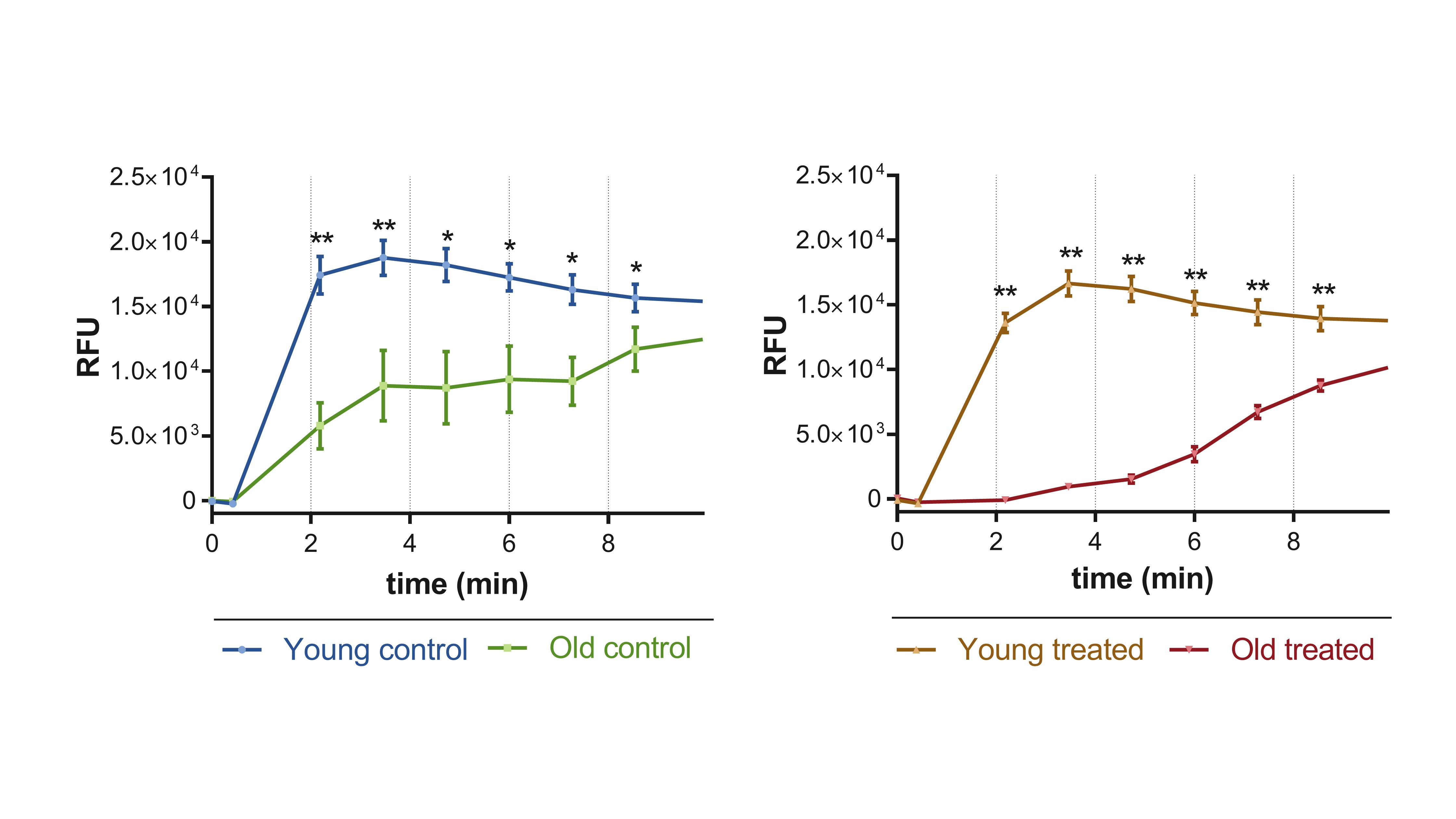Tacrolimus Suppresses Calcineurin Activity and Ca2+ Influx Age-Specifically.
1Transplant Surgery Research Laboratory and Division of Transplant Surgery, Brigham and Women's Hospital, Harvard Medical School, Boston
2Department of Surgery, Campus Virchow-Klinikum and Campus Mitte, Charité-Universitätsmedizin Berlin, Berlin, Germany
Meeting: 2017 American Transplant Congress
Abstract number: A149
Keywords: Age factors, Immunosuppression
Session Information
Session Name: Poster Session A: Immunosuppression
Session Type: Poster Session
Date: Saturday, April 29, 2017
Session Time: 5:30pm-7:30pm
 Presentation Time: 5:30pm-7:30pm
Presentation Time: 5:30pm-7:30pm
Location: Hall D1
Immunosenescence is impacting alloimmunity and outcomes after organ transplantation. Age-dependent effects of immunosuppressants, however, have not been tested sufficiently. Here, we tested the effects of Tacrolimus (TAC) on Th1 T-cells.
Fully MHC-mismatch skin transplants from DBA/2 (H2d) mice were transplanted onto young (6 weeks) and old mice (18 month; C57BL/6; H2b). Trough level adjusted TAC treatment prolonged graft survival significantly in old mice (p= 0.0024). Next, we isolated naïve CD4+ T-cells from young and old splenocytes and cultured those under Th1-polarizing conditions. Of note, intracellular calcineurin concentrations were significantly more reduced in old CD4+ T-cells subsequent to TAC treatment (p<0.05). Since Ca2+ activates calcineurin, we assessed Ca2+ influx upon T cell activation. Indeed, Ca2+ influx decreased significantly in old CD4+ T-cells in the presence of TAC. To confirm the clinical relevance of our findings, we measured Ca2+ influx in human CD4+ Th1 T-cells in the presence or absence of TAC. While calcineurin levels in PBS treated controls were age-independent and comparable, old Th1 T-cells revealed a significantly reduced concentration of calcineurin in the presence of TAC (p<0.05). Moreover, the addition of TAC resulted in a reduced influx of Ca2+ in old human CD4 T cells (p<0.05).
In summary, TAC regulates Th1 T-cells in an age-specific manner linked to a prolonged graft survival in experimental models while old human CD4+ T-cells showed reduced levels of calcineurin. Those findings may serve as a rationale for age-dependent immunosuppressive trials with TAC. Figure. Isolated naïve CD4+ T cells from young (<30) and old (>75) volunteers were cultured under Th1-polarizing conditions with or without TAC (5ng/ml), dyed with a fluorescent Ca2+ calcium indicator and stimulated with PMA/Ionomycin. Statistics: n=5; mean±SD; *p<0.05; **p<0.01.
Figure. Isolated naïve CD4+ T cells from young (<30) and old (>75) volunteers were cultured under Th1-polarizing conditions with or without TAC (5ng/ml), dyed with a fluorescent Ca2+ calcium indicator and stimulated with PMA/Ionomycin. Statistics: n=5; mean±SD; *p<0.05; **p<0.01.
CITATION INFORMATION: Krenzien F, Quante M, Uehara H, Abdi R, Cetina Biefer H, Schmelzle M, Pratschke J, Elkhal A, Tullius S. Tacrolimus Suppresses Calcineurin Activity and Ca2+ Influx Age-Specifically. Am J Transplant. 2017;17 (suppl 3).
To cite this abstract in AMA style:
Krenzien F, Quante M, Uehara H, Abdi R, Biefer HCetina, Schmelzle M, Pratschke J, Elkhal A, Tullius S. Tacrolimus Suppresses Calcineurin Activity and Ca2+ Influx Age-Specifically. [abstract]. Am J Transplant. 2017; 17 (suppl 3). https://atcmeetingabstracts.com/abstract/tacrolimus-suppresses-calcineurin-activity-and-ca2-influx-age-specifically/. Accessed December 23, 2025.« Back to 2017 American Transplant Congress
